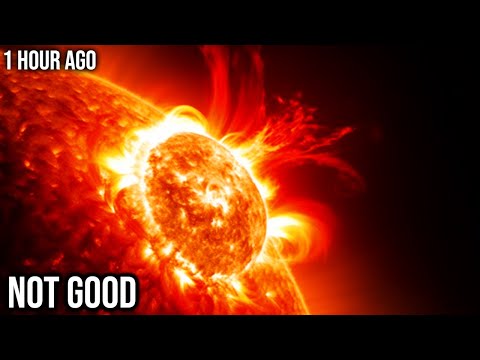
Um, Something Terrifying is Happening on the Sun..
On March 12th, 2023, a powerful shockwave from an X-class flare on the Sun covered Earth. The Soho spacecraft recorded a giant ejection of a fiery mass. Its expanding cloud was carried away towards Earth’s orbit at incredible speed, more than 2,000 km per second. Only the fact that this eruption happened on the far side of the star helped us avoid a real catastrophe. But in the first three months of 2023, there were already seven strongest X-class flares. And it’s exactly the number of flares recorded for the entire past year. Scientists are seriously concerned about the unprecedented activity of the Sun. They attribute it to the star approaching the peak of its 11-year cycle, warning that it could become the strongest in history. So we definitely can’t avoid destructive shocks. Ever since ancient times, people have noticed dark spots on the Sun. But it wasn’t until 1852 that Swiss astronomer Rudolf Wolff noticed that the same dynamics occur on the Sun every 11 years. During the first five or six years, the number of sunspots increases, and having reached its maximum, it decreases for the same number of years. During each such cycle, the magnetic poles of the Sun change places. First they’re deformed because the star’s layers rotate around their axis at different speeds. Then dark spots form at the places of deformation. The larger they are, the stronger the flare will be and the greater the likelihood of a coronal mass ejection, which is the ejection of plasma from the outer layer of the Sun.
On September 1, 1859, in the town of Redhill near London, astronomer Richard Carrington observed a group of such spots when he discovered an unusual flash of light that lasted about five minutes. Just 18 hours later, a real rehearsal for the end of the world began on Earth. In the northeastern United States, dawn suddenly came in the middle of the night and the brightest northern lights passed all over the world to the very equator, where it’s basically impossible to observe such a thing. Telegraph equipment in Europe and North America sparked and ignited on its own, and the excess electricity in the air was so strong that messages from New York to Pittsburgh were sent automatically. Carrington was the first to not only record this colossal flare, but also link it to geomagnetic disturbances on Earth. The Sun had been erratic and flared up regularly for five full days prior. That didn’t affect our planet, but prepared a corridor along which the solar mass ejection flew nonstop. That’s why the charged particles didn’t reach the Earth’s magnetic field in three or four days, as is usually the case, but crashed into it directly in just a few hours. That provoked such a powerful shockwave. Almost two centuries later, electricity has become just as important a part of our lives as air. Therefore, the consequences of such an explosion today are scary even to imagine. This will be estimated in trillions of dollars, and it could take decades to repair the damage. But what if we just prepare for life without light and stock up on generators for a whole year? To answer this question, we need to figure out in what other ways solar flares can affect our planet. The main blow is taken by Earth’s magnetic field, which, together with the atmosphere, protects us from cosmic radiation. The most powerful outbreaks can lead to the spontaneous combustion of de-energized power lines, but the sun can hit us not only from the air. In 1972, more than 60 underwater mines off the coast of Vietnam detonated in a seemingly mystical way. In fact, they were equipped with magnetic fuses. Those had to respond to changes in the magnetic field due to a submarine’s approach. But instead, they were triggered by a geomagnetic disturbance after the outbreak.
Discussed in this video:
Something Terrifying is Happening To The Sun
Found on The Sun
What is Going On The Sun
Something on The Sun
#sun #space #anonymous